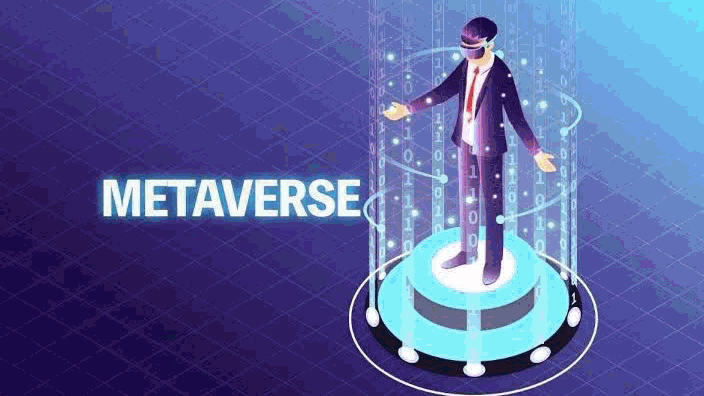
- October 28, 2022
- Samiran Mondal
- 3
A good number of people across the globe have heard about the metaverse, especially those who preview the tech and blockchain space. Surprisingly, only a few understand the metaverse and how it works.
The metaverse began to trend when Facebook announced its plans to venture into the metaverse, going so far as to rebrand the company to become, simply, Meta. However, the concept dates back to the early 90s, mentioned in a science fiction novel by Neal Stephenson.
Introducing the metaverse
The metaverse comes to play to provide a realistic 3D digital world where users can perform various activities, including buying land, shopping, renting, selling goods or services, and more. The term metaverse combines technologies such as augmented reality, eye tracking, and virtual reality.
The metaverse promises to be a game-changer innovation by creating a whole new reality free from the constraints of the physical space we exist in. In this reality, people have 3D digital representations called avatars that they can use to communicate work, play and share memories with other people’s avatar machines.
What elements does one find in the metaverse?
The metaverse, as mentioned before, is a convergence of technologies, each bringing different features and use cases. The digital space consists of 3D avatars, cryptocurrencies or digital tokens, lands, buildings, business billboards, and more.
The digital spaces in the metaverse are based on the fundamentals of Web 3.0, which include decentralization, permissionless, trustless, ubiquitous, and connectivity. Notably, a few such digital worlds have already begun to emerge. Connectivity, computing, and application layers are at the core of these metaverses. Most of these metaverses will be interoperable and fully connected when fully developed, forming many metaverses.
However, converging several fast-evolving technologies can only realize this metaverse vision. These technologies include spatial computing, augmented reality (AR) and virtual reality (VR), 5G/6G networks, cloud continuum and edge computing, blockchain, artificial intelligence (AI), the internet of things (IoT), and head-mounted displays or other sensory devices.
Use cases of the metaverse
The metaverse ecosystem is already experiencing rapid growth, with many companies across industries vying for a share of the market. This is because, despite being in its early phases, the metaverse has already shown infinite possibilities for users, especially in allowing them to connect. This innovation offers humans an in-person way to connect and communicate with others from anywhere in the world.
In addition, the metaverse supports a whole virtual economy allowing people to explore different revenue avenues from their homes. Notably, the global metaverse market is expected to grow from $107.1 billion in 2020 to $758.6 billion by 2026.
Already some metaverse allows users to interact with virtual environments as if they were real. Users can go shopping in Paris in the morning, have a picnic with fends in London, or go on a virtual safari in Kenya before attending a concert by their favorite K-Pop group performing live in Seoul – all from the comfort of their own homes.
Apart from luxury activities, users can also engage in various business opportunities with artists, brands, and even the gaming world. In addition to users and developers, the government is also looking for ways to harness this innovation’s potential. For instance, South Korea has begun working on virtual tourism, filing civil complaints, and other services, all in the metaverse ecosystem.
How to buy land or trade on the metaverse
The first step of engaging in any activity on the metaverse is getting a hold of cryptocurrencies or native tokens, depending on the metaverse. These currencies allow users to purchase directly on the platform or through third parties. Usually, these transactions are recorded through trough transfer of NFTs.
In conclusion, there is still more to learn about the metaverse as it unfolds since it does not fully exist yet. But one thing remains certain, the metaverse is an evolutionary innovation.

Hello, Neat post. There’s a problem together with your website in internet explorer, could check thisK IE still is the market leader and a huge element of other people will miss your wonderful writing because of this problem.
Some truly nice and utilitarian information on this web site, as well I think the style and design has got good features.
Very interesting subject, appreciate it for posting. “The rest is silence.” by William Shakespeare.